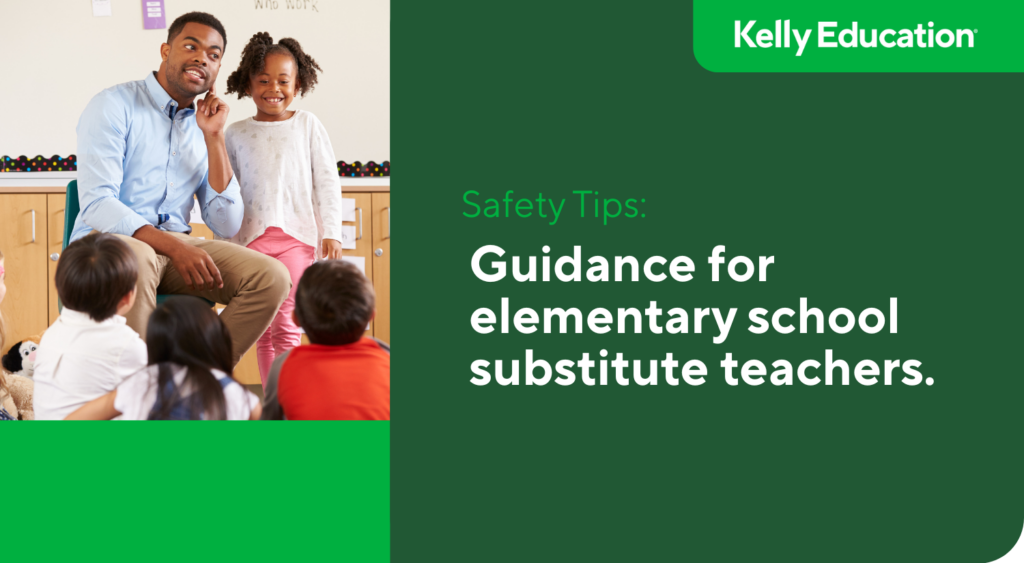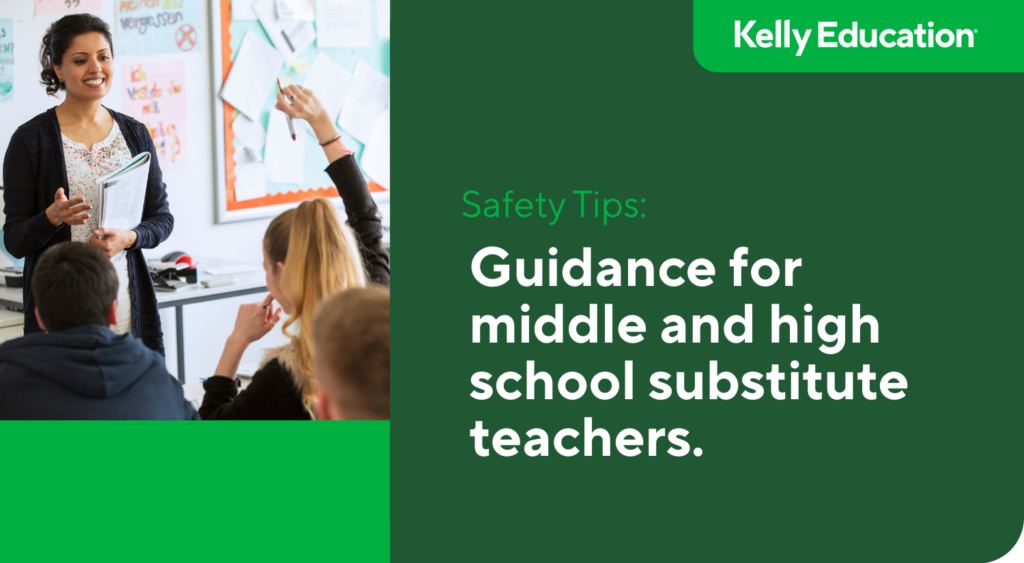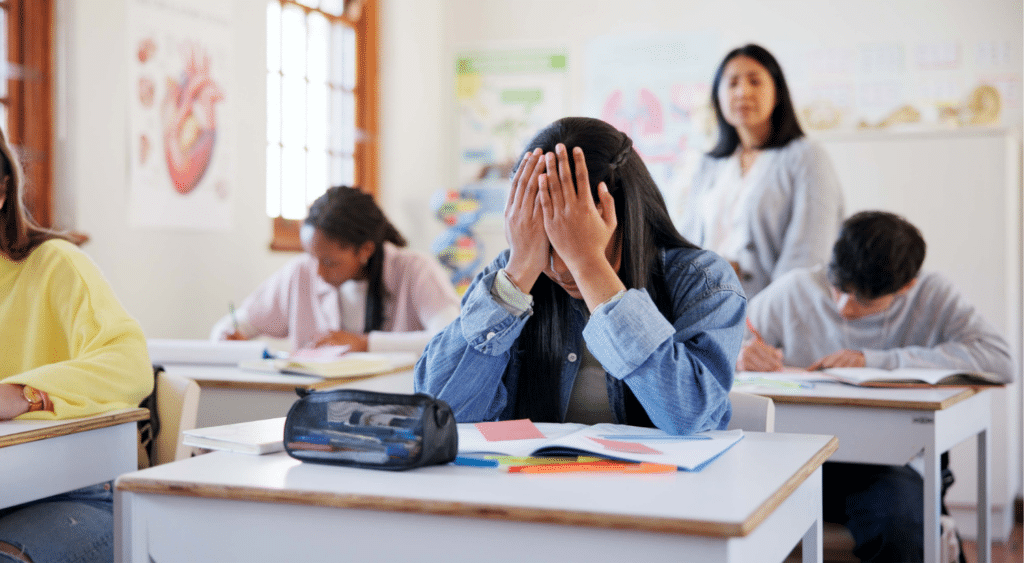Common school safety concerns for substitute teachers – elementary school.

Prioritizing workplace safety in elementary schools is just as fundamental as grading papers or creating lesson plans. Understanding and avoiding safety hazards helps create a healthy and productive learning environment for both you and students.
Hazards in elementary schools:
From slips and falls to breaking up fights, potential workplace dangers are always present in the day-to-day of a substitute teacher. Promoting safety in elementary schools helps prevent accidents and keeps everyone protected. Here are some everyday safety risks you might encounter:
- Slips, trips, and falls: As the most common workplace-related injury in schools, uneven surfaces, loose cords, stairs, and spills can all lead to accidental falls. Of course, injuries can vary, but depending on their severity, they could keep you out of work for extended periods.
- Physical altercations: Violent outbursts can happen at any grade level, including fighting, biting, punching, and kicking. These behaviors can come from social conflicts, special needs, frustration, or having trouble managing emotions.
- Recreational or subject-related injuries: Whether you’re covering gym class or helping out at recess, these activities can come with safety risks. Students running, using equipment, or playing in close quarters can sometimes lead to collisions, scrapes, or more serious injuries.
Practical preventive measures and solutions.
Knowing exactly what to do when you come across these hazards can minimize risks and ensure safety in elementary schools. Follow these tips and solutions to protect yourself and others:
Slips, trips, and falls:
This is a leading injury that can cause serious injuries. These injuries can be reduced by being mindful of where you walk in parking lots, school buildings, and the classroom.
- Uneven surfaces in the sidewalk, stepping over a curb, or walking over a concrete parking lot create risks for trips and falls.
- Avoid distractions while walking, like talking or texting. If you’re not paying attention, you could miss an uneven surface, spill, or the edge of a rug or chair.
- Be on time. Rushing can lead to accidents.
- Never stand on desks or chairs to reach for something. Instead, use a step stool or ask for help.
- Pay special attention to chairs with wheels and make sure all 4 legs of a chair are on the ground before sitting.
- If your chair or desk is on an elevated surface, like a riser or stage, ask the front office if it can be moved to the flat floor, or sit somewhere else if available to prevent a fall. Do not move furniture yourself!
Physical altercations:
- Don’t break up fights. You can get hurt by a student in a scuffle—or accidentally hurt a student. Call the office instead.
- Ask administrators if any students in your class have known behavioral issues. If so, ask about the best de-escalation techniques.
- Pay attention to student frustration levels and other warning signs of violence.
- Since biting is common at the elementary level, closely supervise interactions and encourage safe ways to express emotions. Biting often happens when younger children experience feelings they can’t express with words.
Recreational or subject-related injuries:
- While it might be tempting, don’t participate in recess or gym class — your job as a substitute teacher is to supervise.
- Stay alert and keep an eye on all students — and flying balls!
- If you’re covering for a class that has a science lab, Kelly Education substitute teachers are prohibited from using chemicals, flames, or other dangerous motorized tools.
Emergency situations.
A natural disaster, fire, or lockdown can occur suddenly and unexpectedly. The school likely has procedures and protocols in place to deal with them, so be sure to familiarize yourself with them at the start of the school day. In fact, we ask our educators to ask about these procedures every time they take an assignment. Things change – even if you’ve been in the same building before!
While there isn’t a script to deal with every emergency that may arise, you should be familiar with evacuation routes and procedures as well as shelter-in-place instructions.
Grow as a Kelly Education substitute teacher.
At Kelly Education, we believe in helping our substitute teachers become the best educators for students. We have an entire library of helpful articles for substitute teachers. To get started, check these out:
- Complete guide to becoming a substitute teacher
- How to tackle emergency procedures as a substitute teacher
- What not to do as a substitute teacher
Are you ready to make a difference with flexible work that matters? Fill out our brief interest form, and one of our Kelly Education recruiters will contact you to share more about opportunities with one of our school district partners.
*This article contains common guidance and is not a comprehensive list of policies or procedures outlined in the Kelly Education handbooks.
View Related: Article Workplace culture
You might like
Find your next job
Discover thousands of temporary, full-time, and remote jobs for beginning and experienced job seekers.



